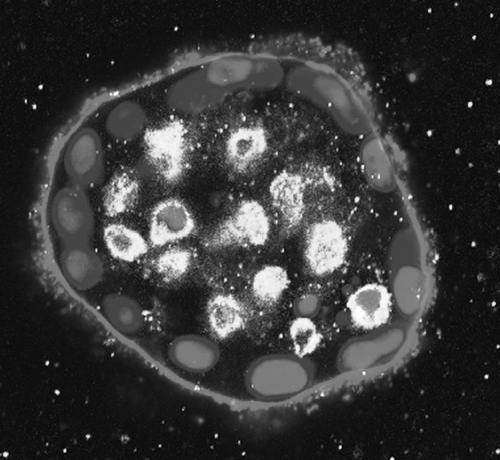A molecular monument-reading for everyone involved in cancer research! The Biology of Cancer Robert Weinberg eds Garland Science 850 pages
Robert Weinberg carries the reputation of combining the best of research and teaching. Reading “The Biology of Cancer”, Garland Science, leaves you with an admiration of how well and broadly this book covers the current field. This book nicely explains the path of the historic milestones of the area and provides an excellent update of the biology of cancer. It also emphasizes crucial contributions from many skilful scientists over the years, and is designed to introduce a new generation of cancer researchers to the field. Its 850 pages contain a lot of information, but it also elegantly points out directions to where the field is heading and glimpses into the areas that need further investigation.
Each chapter starts out with a short introductory quotation like “Anything found to be true of E. coli must also be true of elephants” J. Monod, 1954. Hereafter, the 16 chapters guide you through topics in cancer biology, such as tumor genes, viruses, immortalization, genomic integrity, invasion and metastases with the last chapters devoted to therapy and drug response. The text integrates basic mechanisms with phenotypes and therapeutic approaches. It also pinpoints the versatility of cancer, being a heterogeneous group of diseases which all share the trait of genetic aberrations. Lacking perhaps, are texts on the importance of the epigenetic changes in cancer. The clinician will find links between the cancer signaling pathways and novel treatment options, but not much data as to how the knowledge in cancer biology can be applied in early diagnosis. Considering the current pace within this research field, however, updated versions, and thereby chances for additional chapters, are likely to appear soon.
The book also contains a CD-ROM providing additional educational tools, such as the didactic figures from each chapter in PowerPoint and JPEG formats, all supplementary sidebars, as well as some mini-lectures and illustrative movies. This is a great aid for students as well as for those of us teaching molecular biology.
Aniokis, a form of apoptosis or programmed cell death, triggered by loss of anchorage to the exracellular matrix (ECM). The peripheral cells adhere to the ECM proteins present in the growth media by integrins, whereas the central cells undergo anoikis due to lack of anchorage. This is demonstrated by activation of caspase 3, a protein in the apoptotic cascade. Figure 9.21.

Fortunately for everyone involved in cancer research “The Biology of Cancer” wraps up an immense field in a handy format and motivates increased insights into cancer biology. This book should be present at research labs and cancer-treating departments. It should be read by students, researchers and clinicians and is likely to be informative at different levels. For the medical oncologist or the pathologist it is a foundation for understanding cancer. Mef Nilbert, MD, PhD Department of Oncology Lund University Hospital Lund, Sweden Kajsa Ericson, MD, PhD Ludwig Center for Cancer Genetics & Therapeutics Sidney Kimmel Comprehensive Cancer Center Johns Hopkins Hospital, Baltimore, USA
